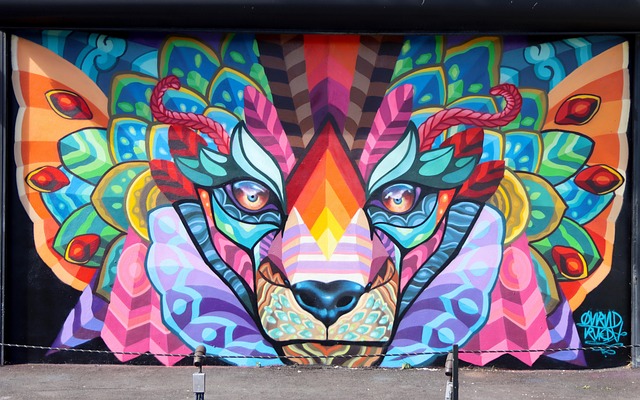# Exploring AI Art: How Machine Intelligence is Redefining Visual Aesthetics and Artistic Boundaries
The intersection of artificial intelligence and art has sparked a revolutionary transformation in the way we perceive, create, and appreciate visual aesthetics. As machine intelligence continues to evolve, it is not merely a tool for artists but rather a collaborator that challenges traditional notions of creativity and authorship. This article delves into the profound impact of AI on the art world, examining its role in redefining artistic boundaries, enhancing creativity, and reshaping the relationship between artists and their work.
## The Emergence of AI in Art Creation
Historically, art has been a uniquely human endeavor, steeped in emotion, experience, and individual perspective. However, the advent of AI has introduced a new paradigm where algorithms can generate images, paintings, and even sculptures that rival human creativity. Machine learning models, particularly generative adversarial networks (GANs), have gained prominence for their ability to learn from vast datasets of existing artwork. By analyzing styles, techniques, and color palettes, these algorithms can produce original pieces that mimic or innovate upon traditional artistic forms.
In 2018, a portrait created by an AI program named “Edmond de Belamy” was auctioned at Christie’s for an astonishing $432,500, marking a significant moment in the recognition of AI-generated art. This event not only highlighted the potential of AI in the creative realm but also raised questions about authorship and the value of art produced by machines. As AI continues to evolve, it blurs the lines between human-made and machine-generated art, challenging our understanding of creativity itself.
## Redefining Creativity and Collaboration
One of the most intriguing aspects of AI art is its ability to redefine the concept of creativity. Traditionally, creativity has been viewed as an inherently human trait, characterized by intuition, emotion, and personal experience. Yet, AI challenges this notion by demonstrating that creativity can also stem from data-driven processes and algorithms. Artists are increasingly embracing AI as a collaborative partner rather than a mere tool, allowing for a fusion of human intuition and machine precision.
Collaboration between artists and AI has led to innovative practices that expand the boundaries of artistic expression. For instance, artists can use AI to generate multiple iterations of a concept, enabling them to explore a broader range of possibilities. By inputting their own artistic vision into an AI system, they can produce variations that may not have been conceived through traditional methods. This partnership fosters an environment where experimentation and exploration are paramount, ultimately enriching the artistic process.
Moreover, AI has the potential to democratize art creation. With user-friendly platforms and applications, individuals without formal training can engage in artistic endeavors, leveraging AI to produce visually striking works. This accessibility invites a diverse range of voices into the art world, challenging the elitism often associated with traditional artistic practices. As a result, new genres and styles are emerging, reflecting a broader spectrum of human experience and creativity.
## Ethical Considerations and the Future of AI Art
As AI continues to shape the artistic landscape, ethical considerations come to the forefront. The question of authorship remains a contentious topic in the art community. When a machine generates a piece of art, who is the true creator? Is it the programmer who designed the algorithm, the artist who provided the input, or the AI itself? These questions provoke discussions about intellectual property rights and the value we assign to human creativity versus machine-generated output.
Additionally, the potential for AI to perpetuate biases present in training datasets raises concerns about representation in art. If an AI is trained predominantly on works from a specific demographic or cultural background, it may inadvertently reinforce stereotypes or exclude marginalized voices. Addressing these biases requires a conscious effort from artists and technologists alike to ensure that AI art reflects a diverse and inclusive range of perspectives.
Looking to the future, the role of AI in art is likely to expand further, with advancements in technology paving the way for even more sophisticated collaborations. As AI becomes increasingly integrated into the creative process, artists may find themselves exploring new mediums and formats that were previously unimaginable. Virtual reality, augmented reality, and interactive installations are just a few areas where AI can play a transformative role, inviting audiences to engage with art in dynamic and immersive ways.
## Conclusion: A New Era of Artistic Expression
In conclusion, the emergence of AI in the art world represents a profound shift in how we conceive of creativity, collaboration, and the very essence of artistic expression. By redefining visual aesthetics and challenging traditional boundaries, AI is not only transforming the creative process but also inviting a broader range of voices into the conversation. As artists and technologists continue to navigate this evolving landscape, the potential for innovation and exploration is limitless.
As we embrace this new era of artistic expression, it is essential to remain cognizant of the ethical implications and strive for inclusivity in AI-generated art. The future holds exciting possibilities, and the collaboration between human creativity and machine intelligence promises to enrich the art world in ways we are only beginning to comprehend. By fostering a dialogue that embraces both the opportunities and challenges presented by AI, we can ensure that art continues to evolve as a reflection of our shared human experience.

